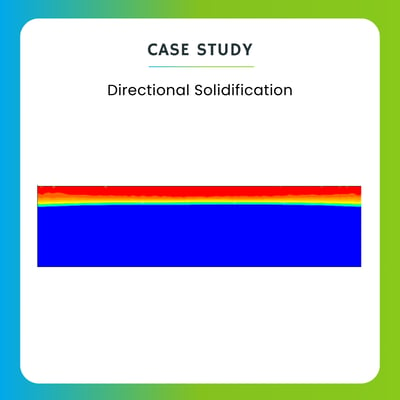Mercury contamination in oil and gas pipelines poses serious challenges—leading to pipeline corrosion and environmental hazards due to biomagnification in marine ecosystems. This case study investigates the gas-assisted transport of liquid heavy metals, like mercury, to enable effective removal from pipelines.
The study focused on understanding the impact of liquid physical properties on its flow behavior using a specially designed undulating pipeline setup that simulates subsea and hilly terrains. Multiphase flow visualization was conducted using high-speed cameras to capture key phenomena such as liquid film creeping, droplet formation through atomization, and gas-liquid interaction in inclined pipelines.
Download the full case study to uncover how advanced flow modeling and visual analysis contribute to safer and more efficient heavy metal removal strategies in pipeline systems.
Related Use Cases

Use Cases
Directional Solidification
.png?length=400&name=Main%20Final%20Temp%20CS%20(2).png)
Use Cases
Impeller Design – PSD

Use Cases
Esterification Reactor
.png?length=400&name=Multiphase%20&%20Single-phase%20flow%20study%20for%20sand%20transport%20in%20inclined%20well%20(1).png)
Use Cases
Multiphase & Single-Phase Flow Study for Sand Transport in Inclined Well
Have a Question?
If you need assistance beyond what is provided above, please contact us.
